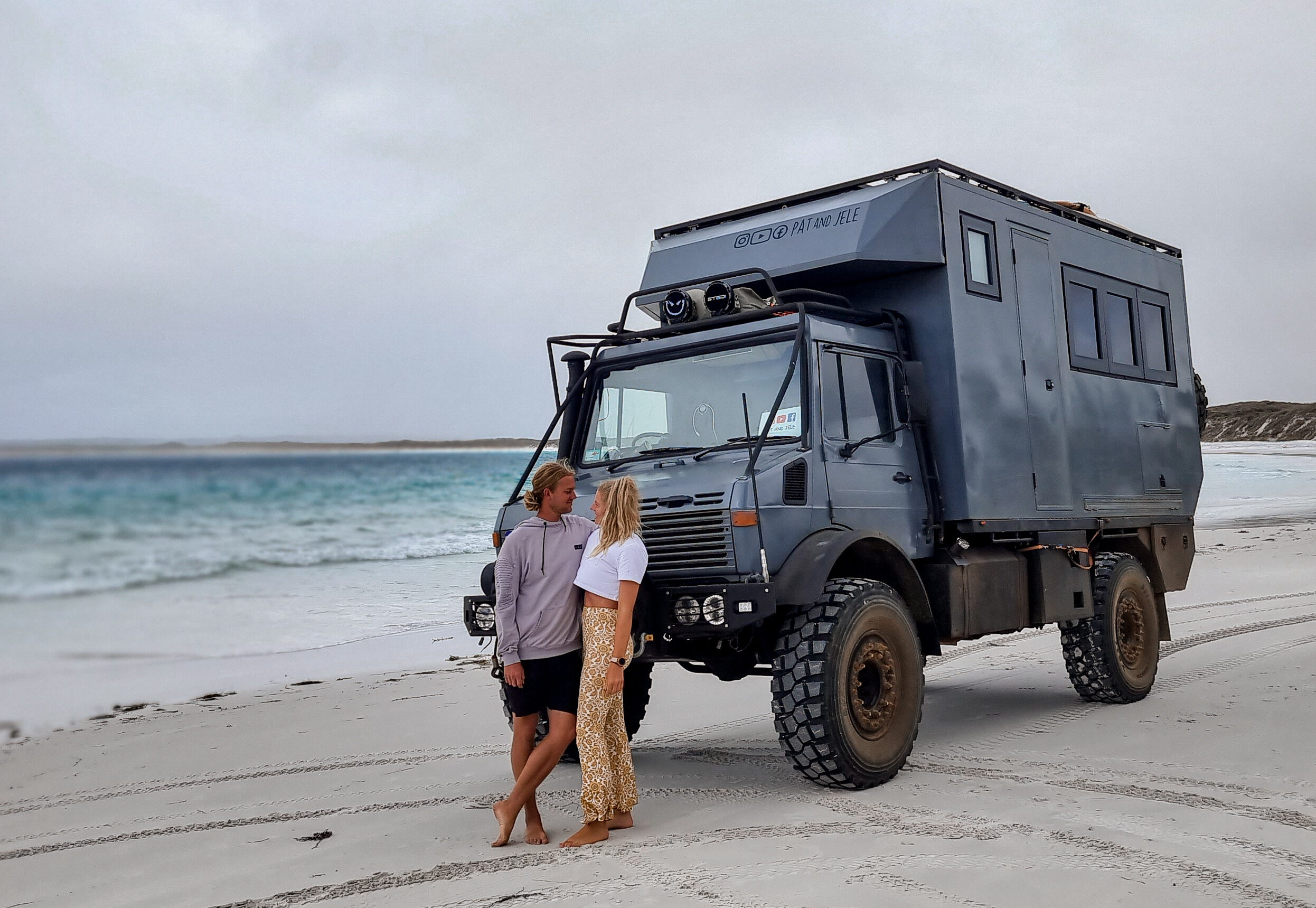Imagine having the opportunity to relive your life. Reflect for a moment on the paths you would choose if youth, vitality, and wisdom were your constant companions. This is the story of a young couple who decided to answer these questions not just in thought, but through action, traveling far from home and building a vehicle to make their dreams a reality. Patrick and Jelena, affectionately known as Pat and Jele, independently chose to embark on a transformative journey that began in their native Germany and led them to the vast landscapes of Australia. Their backgrounds are as diverse as the terrains they traverse. With a background in aerospace engineering, Patrick initially traveled to Australia to pursue his master’s thesis in hypersonics.
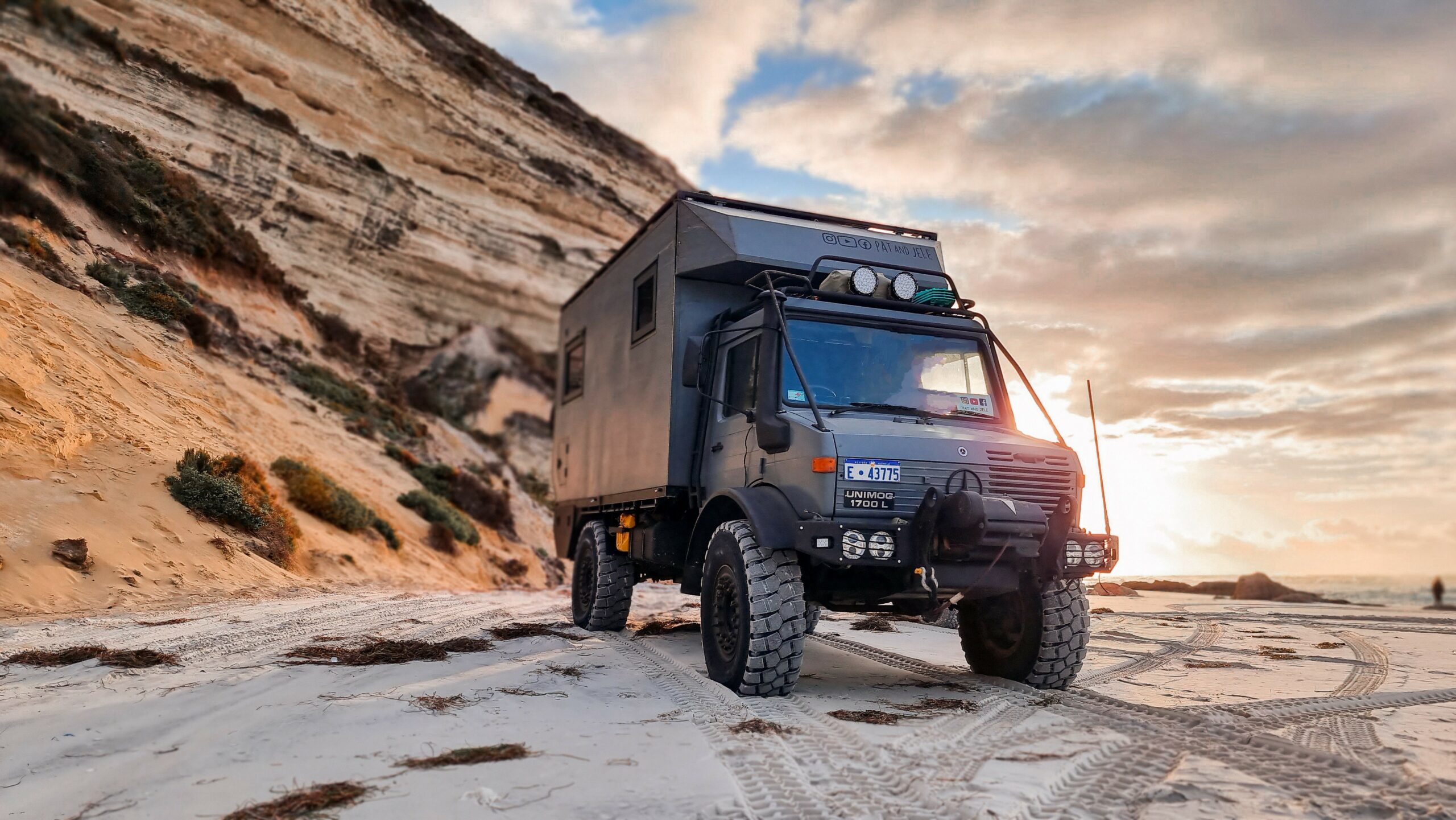
Meanwhile, Jele was immersed in the mustard of Business Administration with a side order pickle of insurance management. Despite their varied pursuits, fate brought them together in the land Down Under. Naturally, all work and no play does not lead to a balanced, fun, and adventurous lifestyle. The fresh couple’s initial encounter with the allure of overland travel transpired amidst the bustling streets of Brisbane. Surrounded by a community of adventurers roaming the Australian Outback in vans, they felt a magnetic pull toward the nomadic lifestyle of sun, sea, strumming guitars, and campfires. It was then that the seeds of their unconventional journey were sown. They acquired an ex-ambulance Mercedes Sprinter, fondly christened as “Zip,” and commenced the arduous yet rewarding task of converting it into their humble abode on wheels in preparation for a “lap” around Oz.
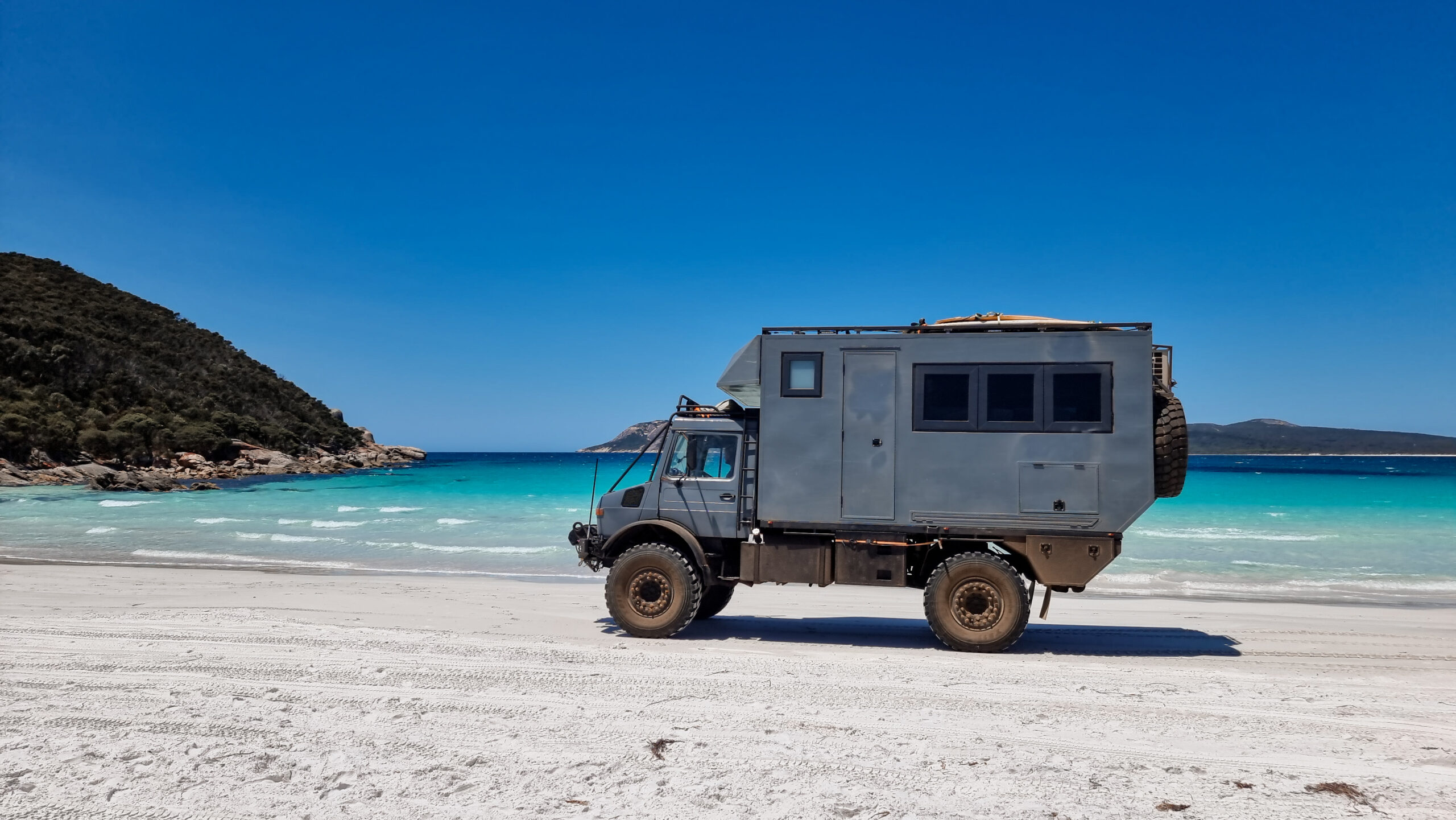
After completing his master’s thesis, Pat and Jele returned to Germany in February 2020 and soon returned to Australia on a working holiday visa. Their plans took an unexpected turn with the global upheaval caused by the Covid-19 pandemic. What was supposed to be a year-long sojourn around Australia became a period of uncertainty and adaptation. The initial three months were spent grappling with the ramifications of lockdowns, confined to the confines of their makeshift home. Eventually, as soon as travel restrictions eased, they embarked on their odyssey.
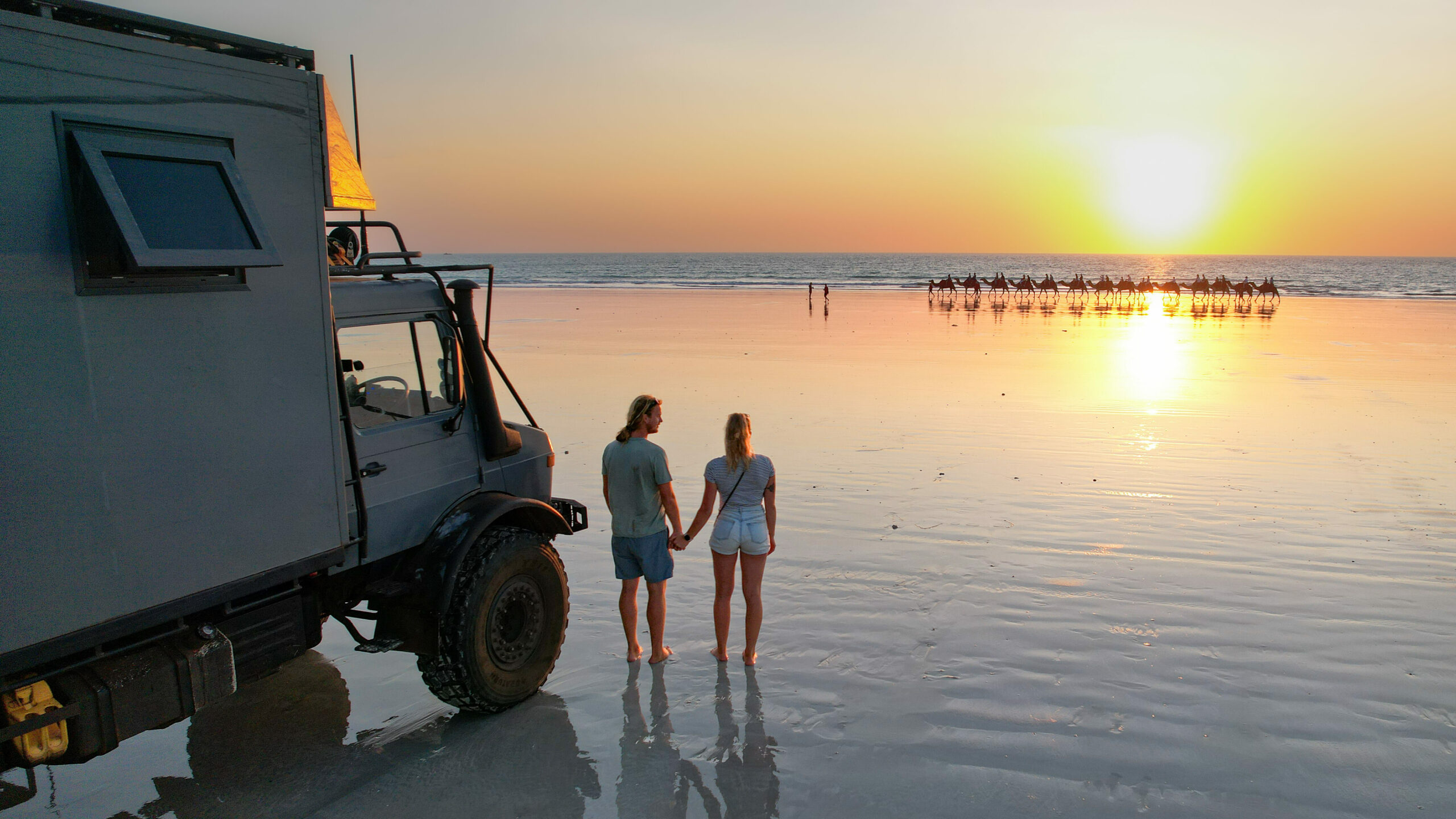
Their journey northward from Brisbane unveiled the rugged beauty of the Australian landscape, punctuated by pit stops at Rainbow Beach and the iconic Cape York Peninsula. Despite navigating difficult terrain in their 2WD Sprinter, the allure of more exciting off-road adventures beckoned. Their wanderlust led them further along the coast, exploring the untamed wilderness of the Gulf of Carpentaria until they found themselves happily in the tranquility of the southwestern region of Western Australia. During their journey, it had become painfully apparent that a 2WD van is not the ideal vehicle if you intend to get away from the drum-beating crowds and far from the beaten track.
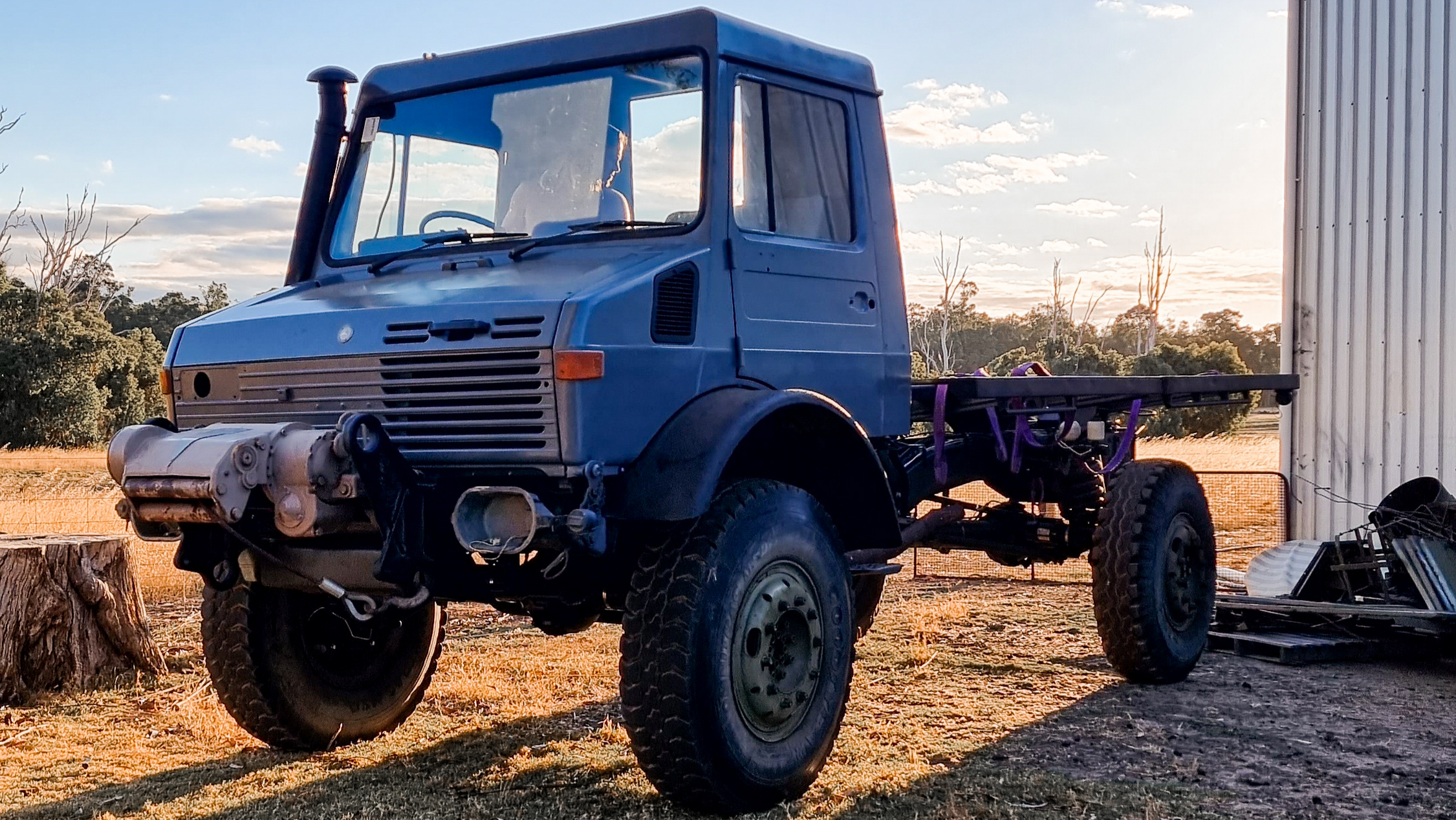
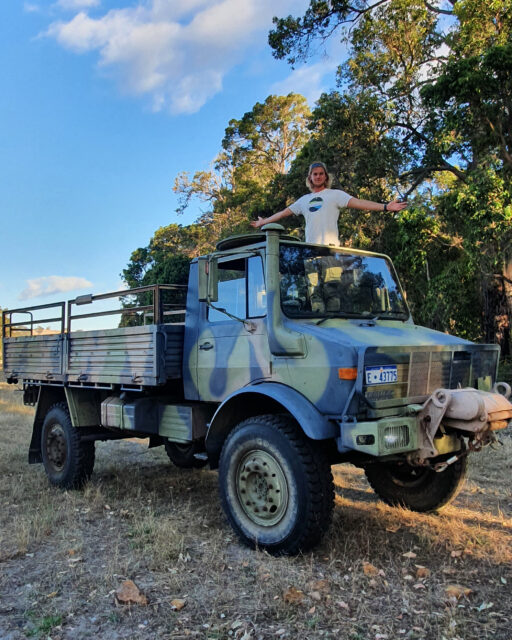
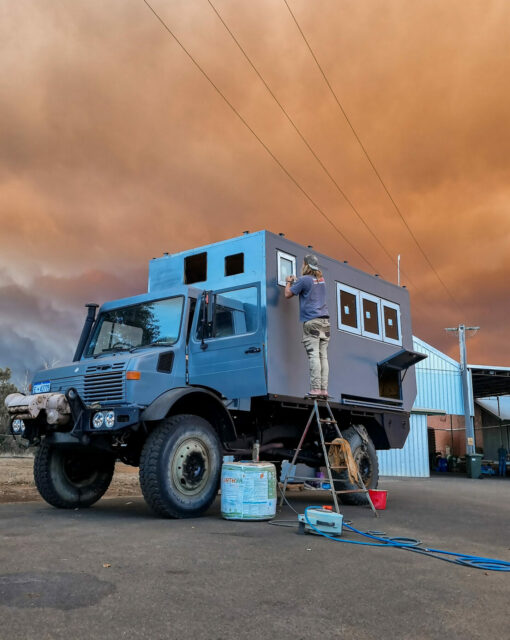
The genesis of their dream vehicle, a Unimog transformed into a formidable camper, took root against the idyllic backdrop of a working farm in Donnybrook south of Perth, Western Australia, where the couple had found temporary work. Inspired by the local Unimog community and fueled by their ingenuity and ability, Patrick and Jele decided to source and build the ideal overland vehicle. The off-road prowess and excellent carrying capacity of the Unimog made it the perfect base for a long-term travel vehicle. Yes, the Unimog may be heavy, thirsty, and slow, but it is also bulletproof and designed to be adapted for various important uses, such as military, agricultural, or exploration vehicles. After meeting Unimog enthusiasts in Perth and witnessing how the vehicle effortlessly navigated rugged terrain, such as driving through a seemingly impassable boulder field, the deal was sealed, and the couple knew that the Unimog was the just right for their intended style of travel. With an empty weight of approximately 13,228 pounds and a gross vehicle mass (GVM) of 26,455 pounds, the Unimog allows for a legal loading capacity of 13,228 pounds on the back. This substantial weight-carrying capacity was a significant factor in Pat and Jele’s decision to choose a Unimog. It allowed them to construct a sturdy habitation box capable of withstanding rugged off-road conditions.
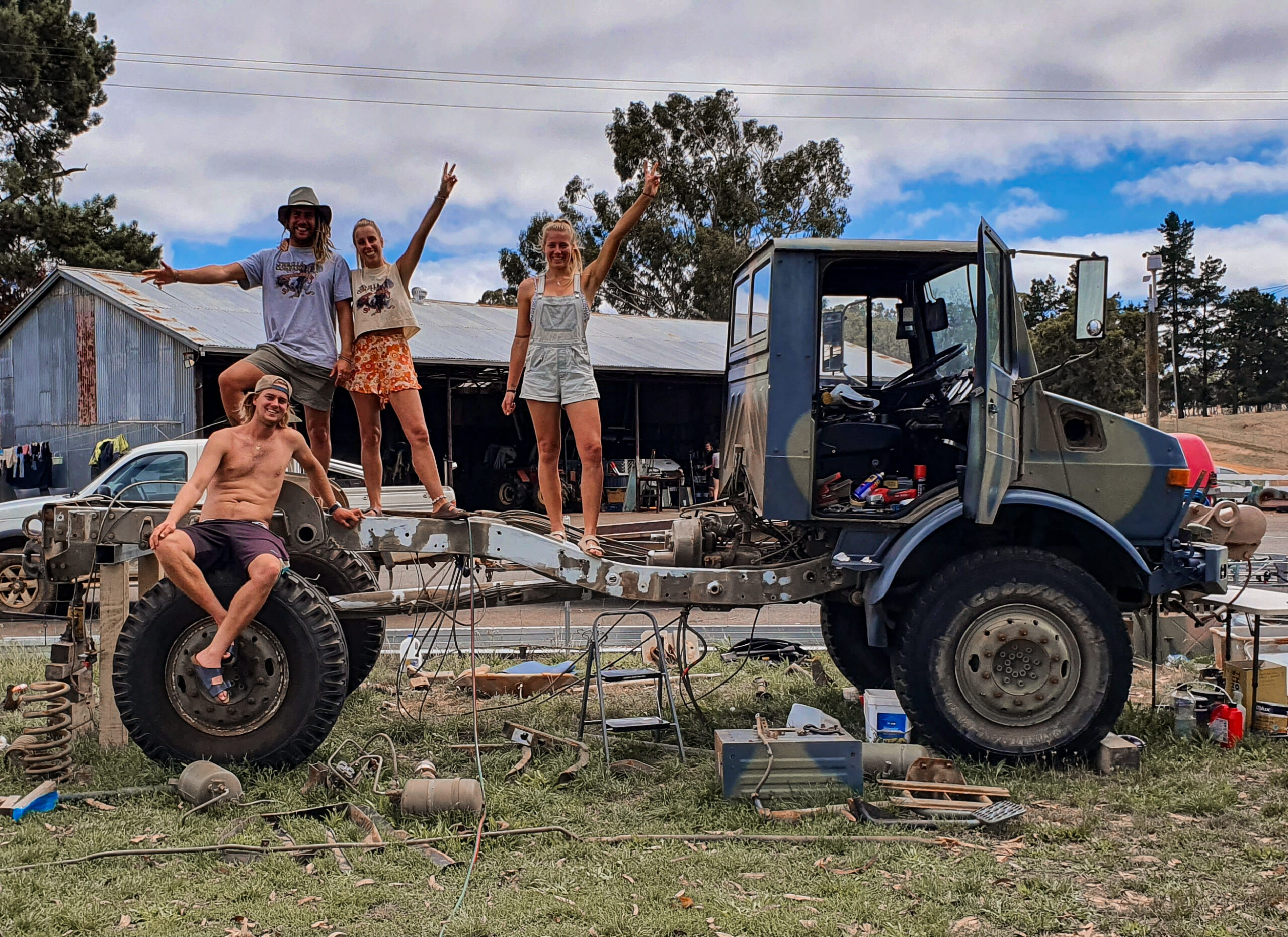
Pat and Jele acquired the truck second-hand from a private seller. When obtaining ex-military Unimogs, there are primarily two options: purchasing one from military surplus auctions, often without a thorough inspection, or buying from a private individual who acquired theirs from the auction. Their experience with the latter was exceptionally positive. The previous owners, an elderly couple from Esperance, had originally intended to convert the Unimog into a camper. However, due to age and health concerns, they opted for a coaster bus instead. They graciously allowed Pat and Jele to fulfill the dream they once harbored and were very accommodating during the negotiation process. Ultimately, Pat and Jele secured the Unimog for approximately AUD 21,000 (USD 13,800), including registration.
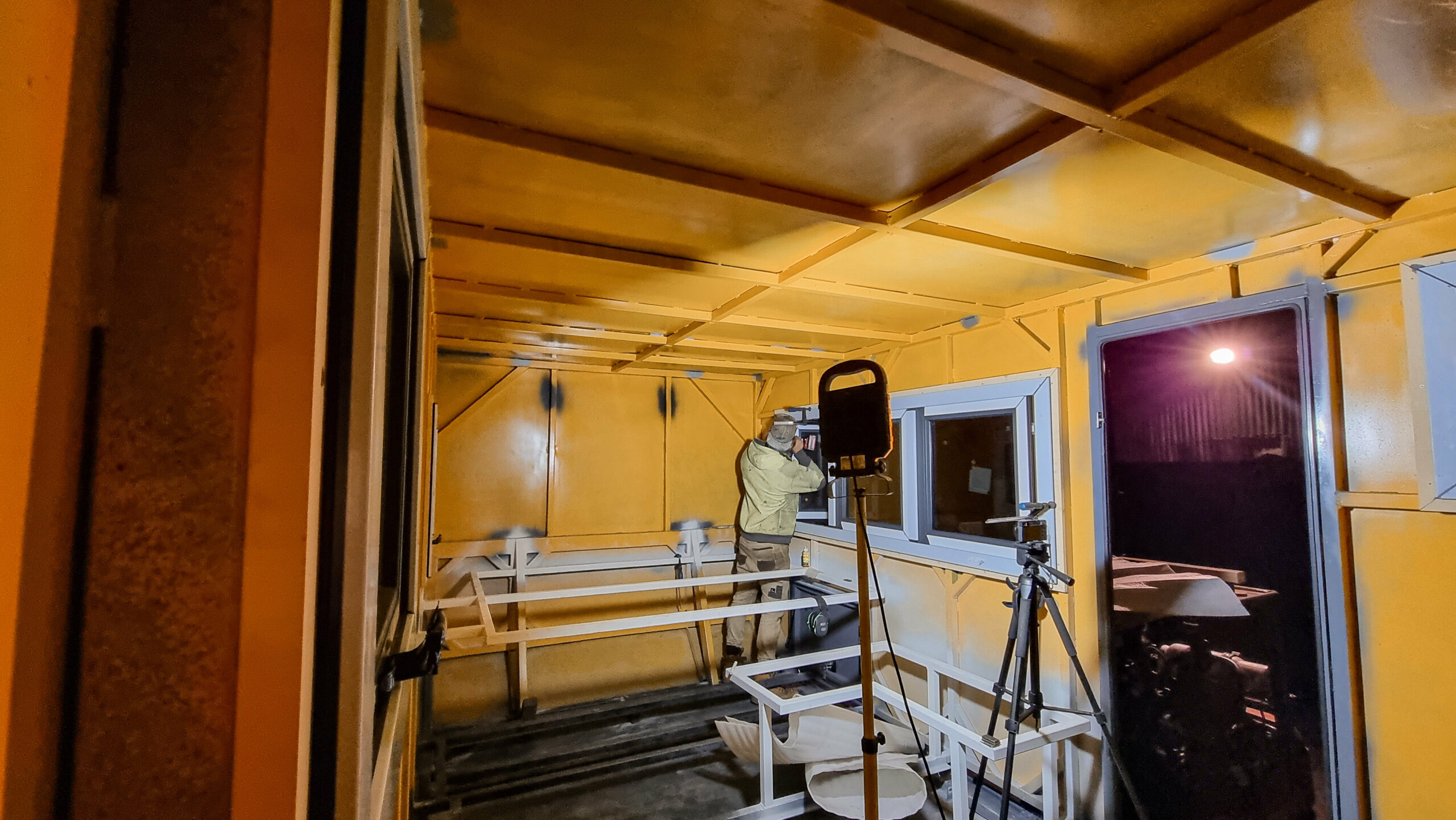
The construction of the camper box and the interior design proved to be significantly more expensive than initially anticipated. Amidst the Covid-19 pandemic, they faced fluctuating prices and unstable supply chains, resulting in additional costs. For instance, when they ordered the steel for the camper box, they experienced a sudden 5 percent increase in steel prices, followed by further surges in the months that ensued. Compounded by the progressively elaborate and intricate design of the camper, both internally and externally, they found themselves rapidly exceeding their budget of AUD 20,000 ($13,074 USD). Eventually, they lost track of their expenses due to the unexpected challenges and rising costs. A rule of thumb when building a camper is to calculate a budget, then double it, and you might be halfway to a realistic eventual investment amount.
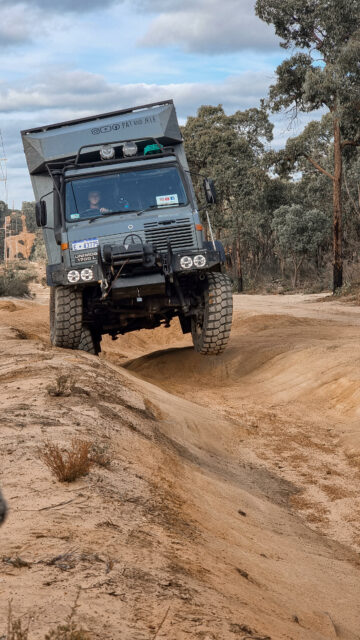
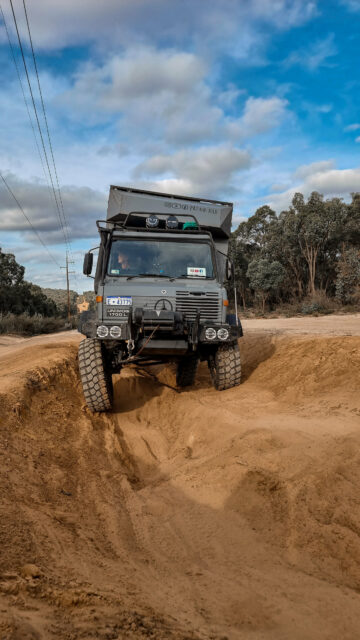
The road to realizing their vision was challenging, to say the least, yet each obstacle served as a stepping stone toward their ultimate goal. The protracted build process, initially slated for six months, extended into a two-year labor of love. Balancing full-time work on the farm with the meticulous construction of their dream vehicle demanded dedication and perseverance.
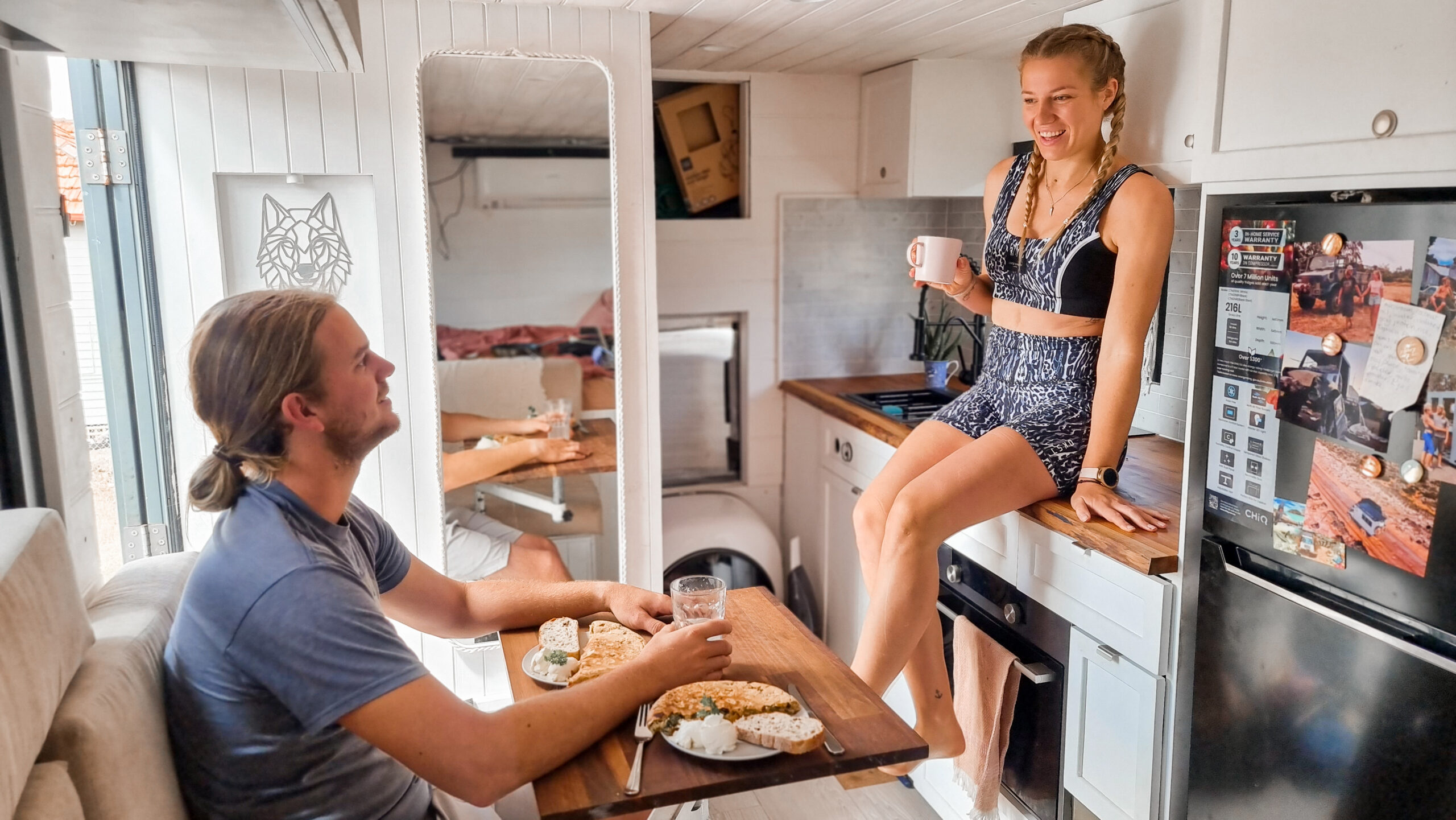
Much of the interior design in Pat and Jele’s project was driven by their desire to improve upon their previous van build. They aimed for a more efficient use of space, including a larger kitchen area with a spacious countertop and incorporating a toilet with an indoor shower. Additionally, they introduced creative features such as a slide-out balcony, initially conceived as brainstormed ideas that evolved into essential components of their design. Opting for an all-electric setup for cooking stemmed from their dissatisfaction with gas usage during their van travels. While they contributed most of the design ideas themselves, they drew inspiration from the European expedition vehicle industry for important solutions to common build challenges.
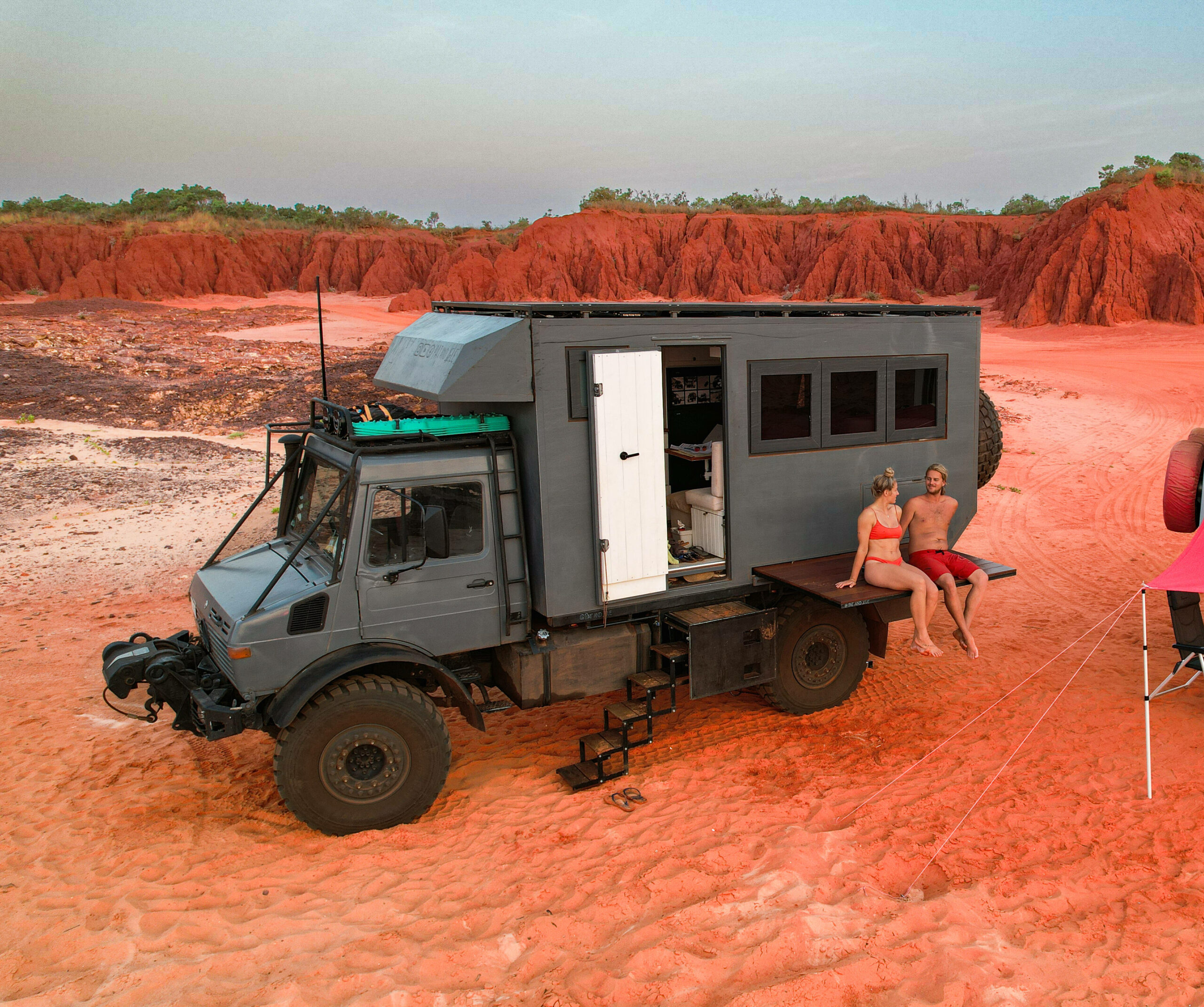
Their expertise in welding and CAD design, coupled with invaluable insights gleaned from the Unimog community, helped to keep costs down and allowed for maximum customization. Through trial and error, they navigated the intricacies and challenges of fabrication and installation: measure thrice, cut once. Every setback was a stepping stone to the end result, fueled by their passion to leave the workshop eventually and the farm they had called home for so long and get back on the open road.
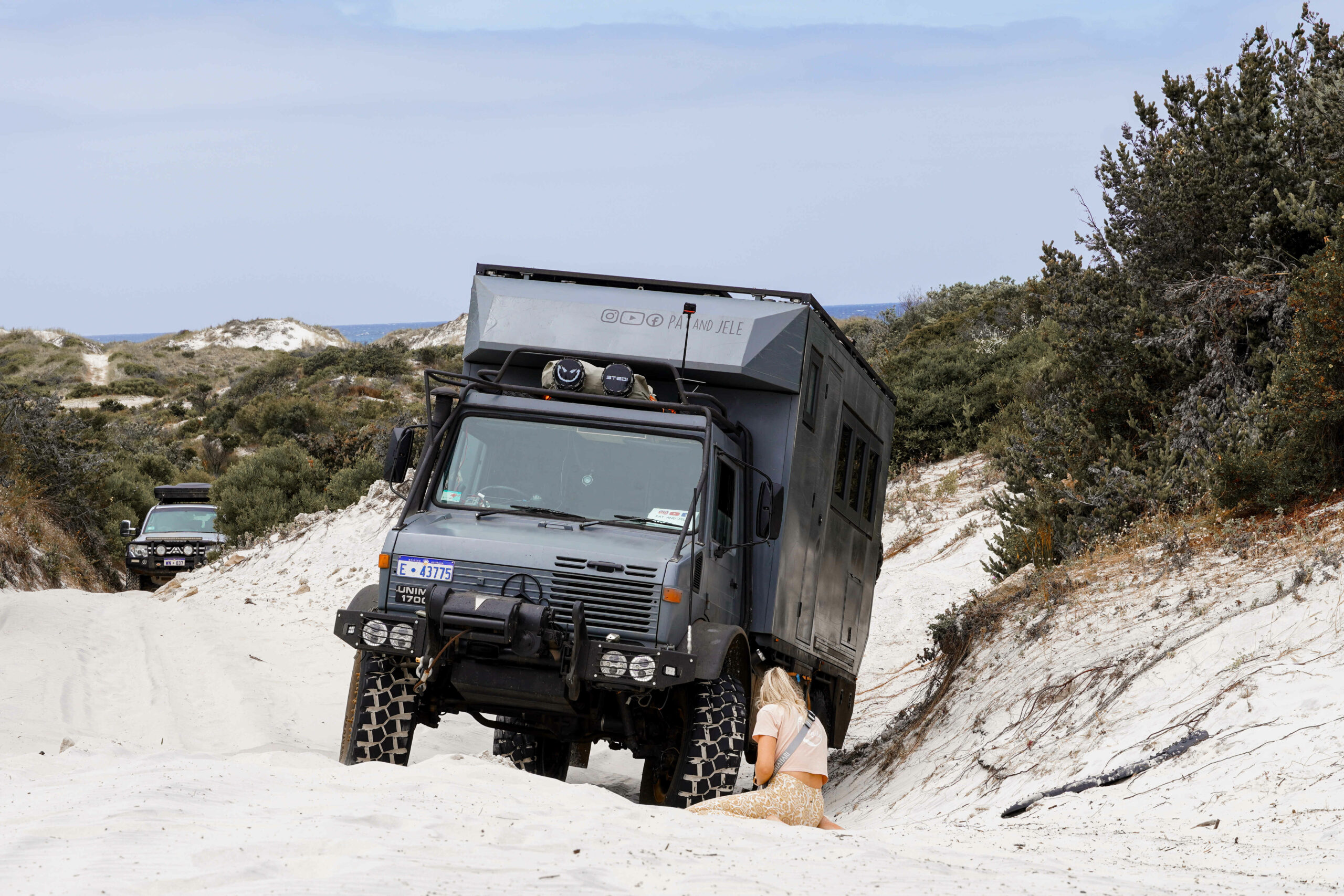
The name Moggy derives from “Unimog” and also happens to be the name of Jele’s younger sister, albeit spelled as “Moggi.” This shared name fosters a sense of closeness and home for Jele whenever they are traveling in the vehicle.
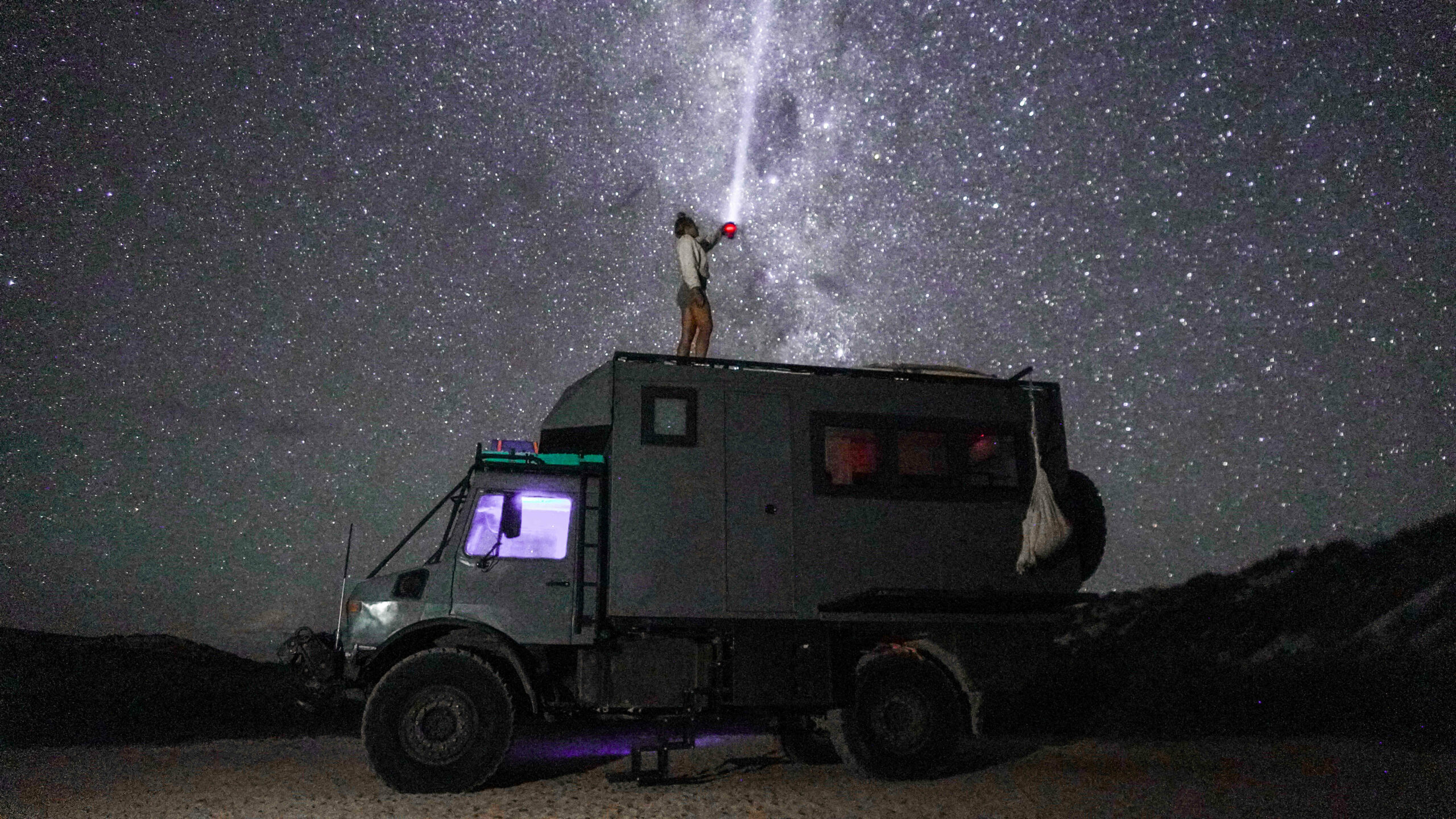
Eventually, Moggy came together as envisaged. Constructed from steel, the camper is a sturdy fortress against the elements, enabling Patrick and Jele to explore and discover landscapes inaccessible to conventional campers. Its pièce de résistance, the slide-out deck, offers panoramic vistas of pristine beaches and sunsets, serving as a sanctuary in the vast expanse of the Australian wilderness.
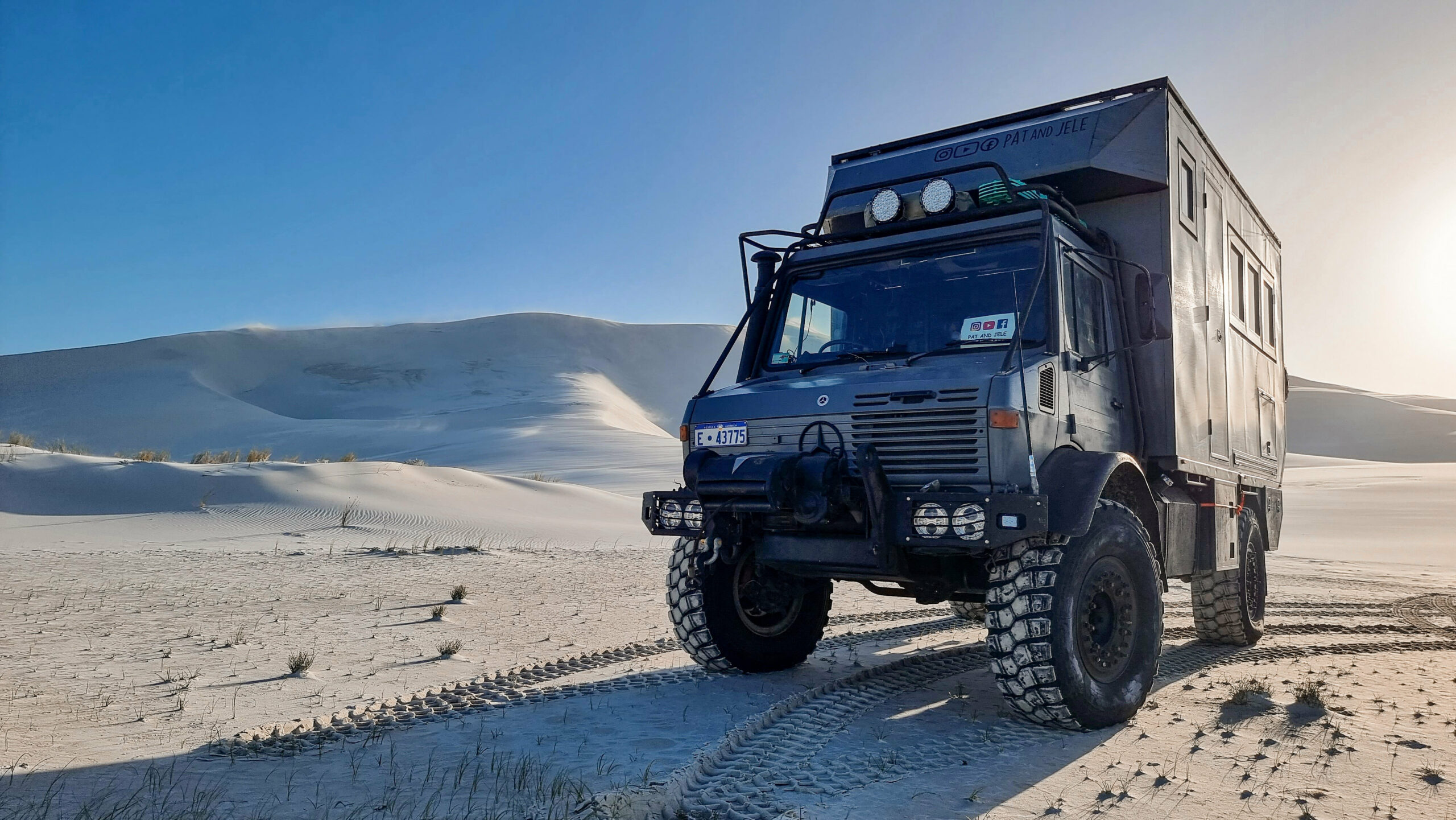
The base vehicle remains largely unchanged from its original configuration. The couple have made a few modifications, including installing air-conditioning in the cab and upgrading to a new alternator. However, the engine and drivetrain remain in stock condition. They have also incorporated some additional features, such as switchable electric compressors, temperature sensors, and accessories that enhance functionality and convenience.
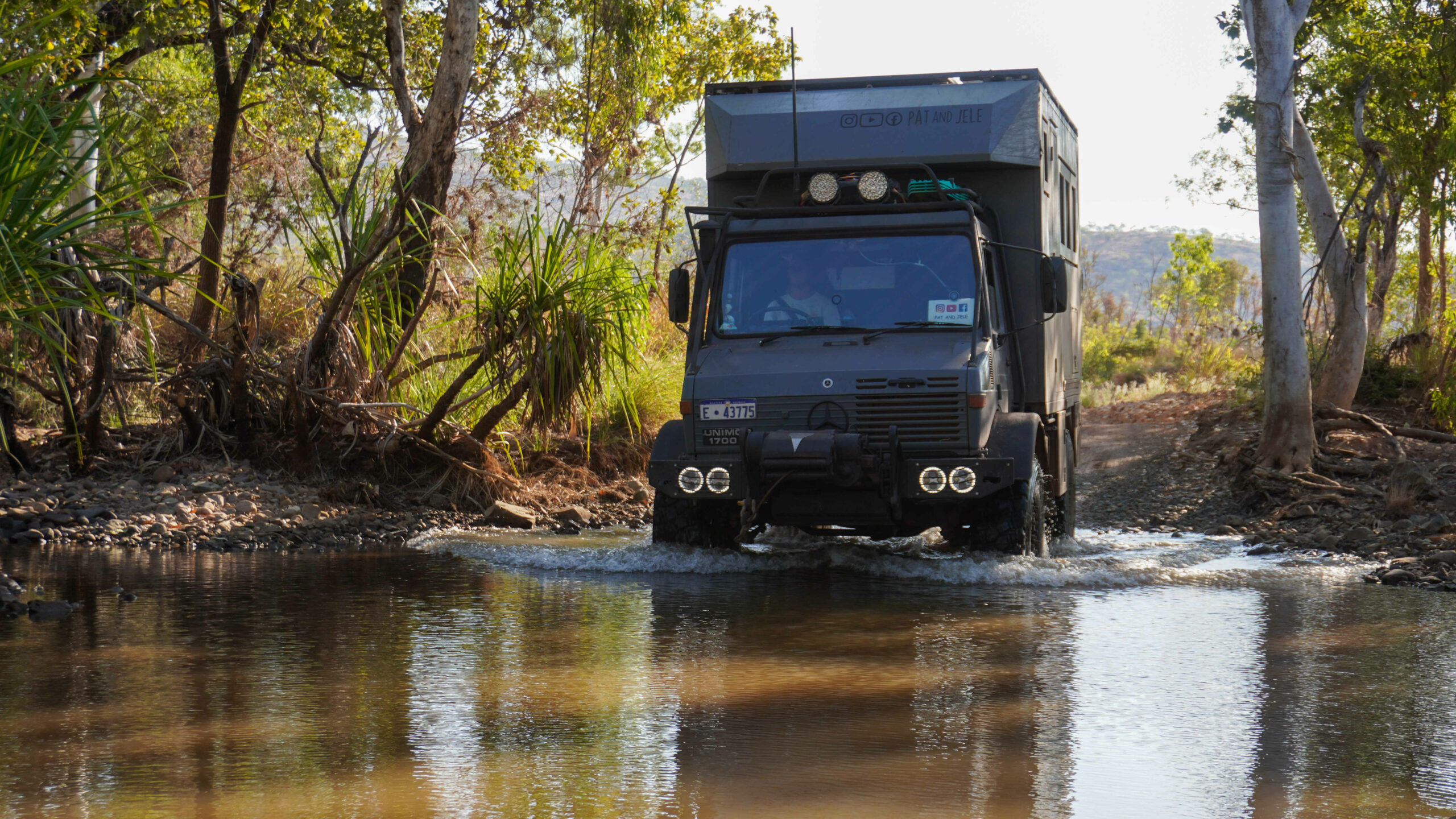
Since building Moggy, Pat and Jele have journeyed extensively throughout the Southwest of Western Australia, traveling up the coast to Darwin and then crossing over to northern Queensland. From there, they made their way down toward Brisbane and the Gold Coast, where they are currently stationed for work.
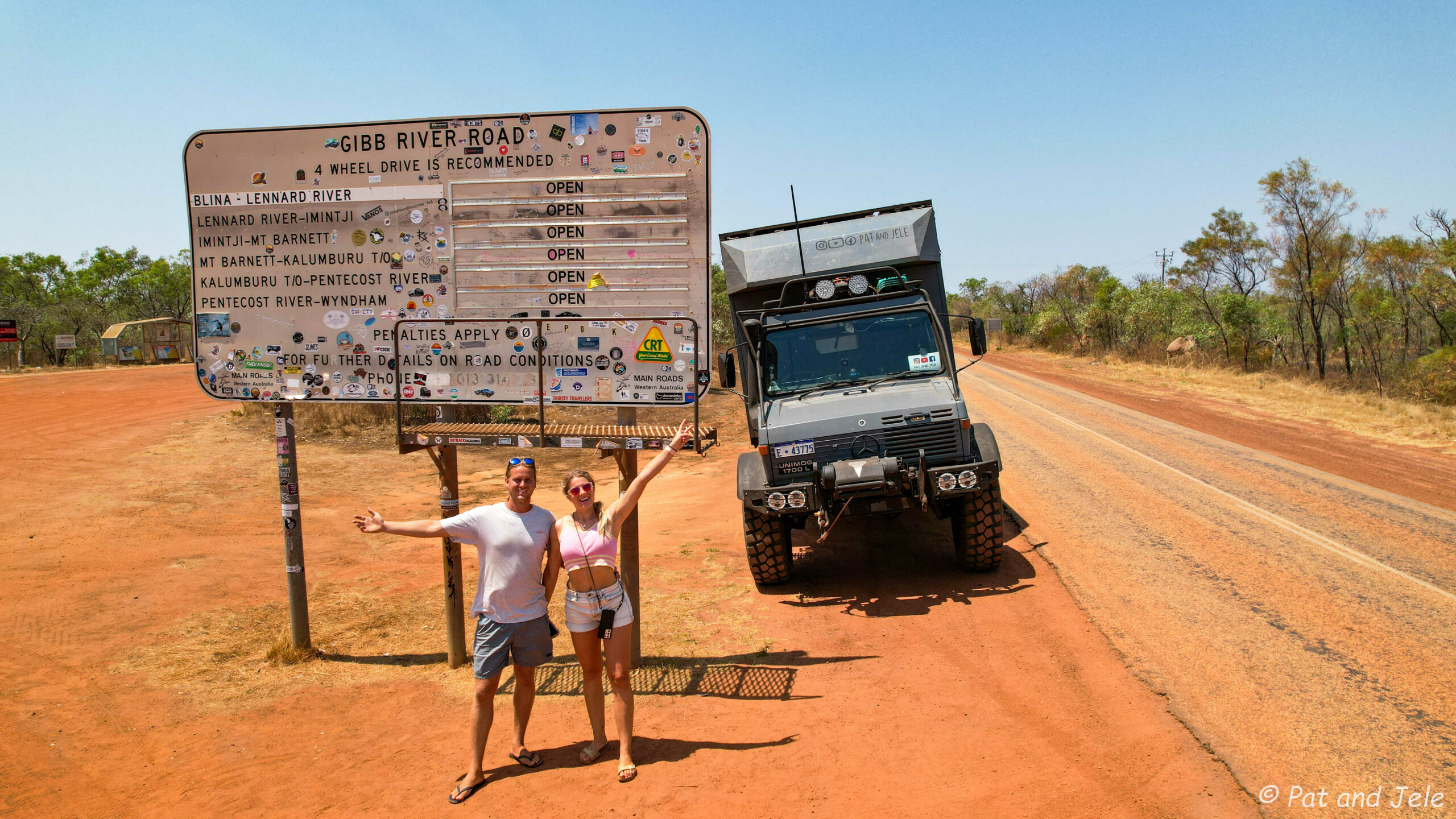
The adventurous couple plan to extend their travels to New South Wales, Victoria, and South Australia, along with exploring inland regions in the future. Currently, they are working to establish permanent residency in Australia, and if granted permission to remain, they intend to start a family. They dream of sharing the joys of life on the road with their children, particularly during their formative years, and while the couple loves their home on wheels, they anticipate building another Unimog, similar to their current vehicle, but with extensive modifications to accommodate a rugrat or two.
We look forward to seeing the family grow and following this couple’s adventures across Australia and, perhaps, the globe.
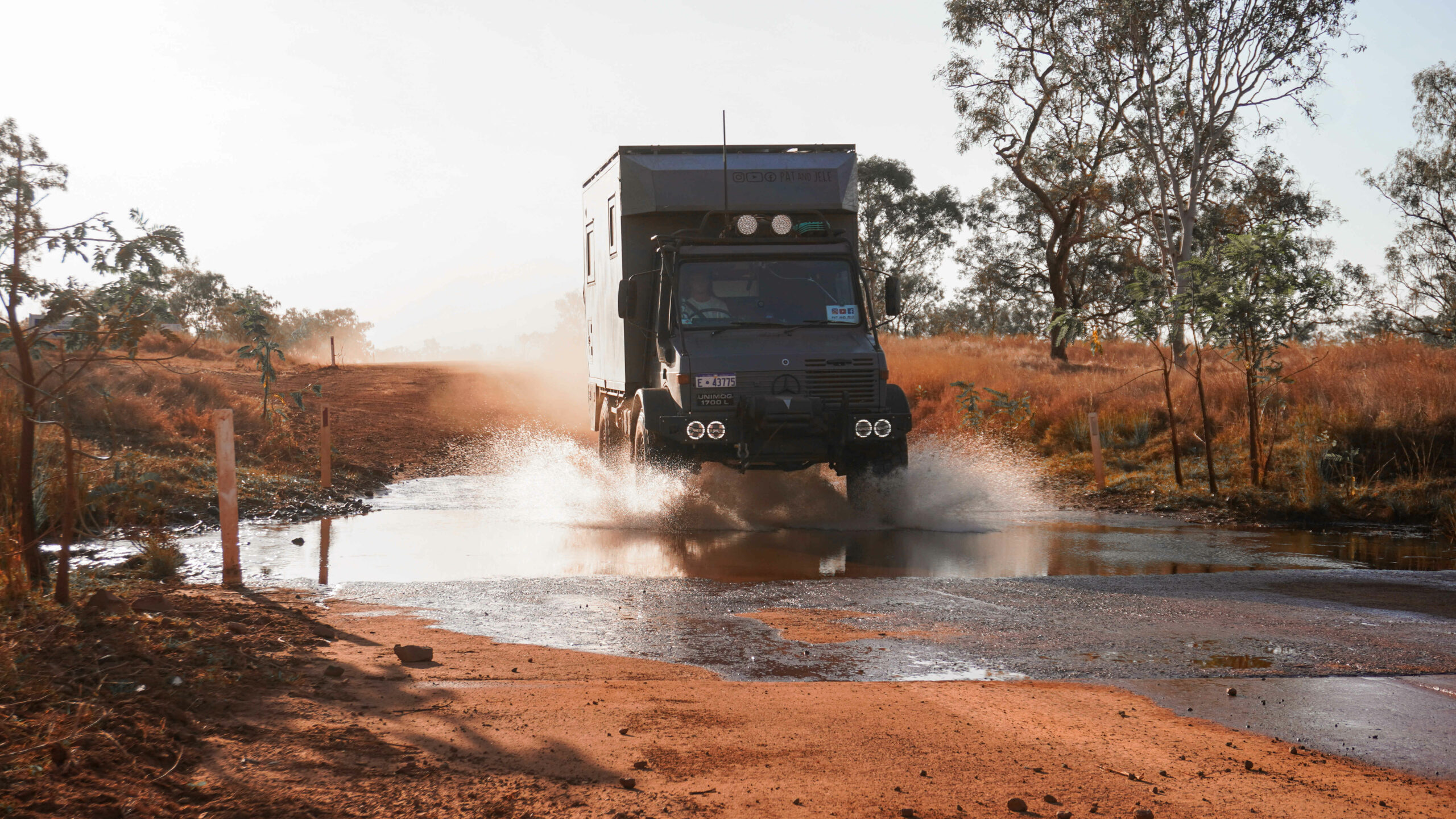
1985 Mercedes-Benz Unimog U1700L Specifications:
Power
- OM352 A turbo (non-intercooled) inline 5.7-liter six-cylinder diesel with about 150 horsepower and 460 newton-meters of torque at 1,600 revolutions per minute
- UG3/40 8-speed manual gearbox (8 forward and eight reverse)
Suspension and Drive
Portal axles with coil suspension all around
Wheels and Tires
- Duraturn 46-inch 395/85 R20 tires
- Hutchinson 10-inch rims
Recovery and Armor
- PTO 6.5-ton winch
- Habitation box clad with 2-millimeter steel sheet
Accessories
- Stedi Iris headlights and spotlights
- Haefele LOOX5 interior lighting (warm white cool white Bluetooth controllable LED strips)
- 840 amp-hour at 24-volt (21 kilo-watt-hour) battery
- 5,000-watt inverter
- Four solar panels totaling 1,300-watt power
- 50-amp 24-volt DC-DC charger
- Electric slide-out deck
- Indoor and outdoor kitchen, bathroom with shower
Social media:
YouTube: JPAdventures19
Facebook: JP-Adventures19-and-Unimog-Moggy
Instagram: patandjele
Read More: Practical Overland Knives : Buyers Guide
Our No Compromise Clause: We do not accept advertorial content or allow advertising to influence our coverage, and our contributors are guaranteed editorial independence. Overland International may earn a small commission from affiliate links included in this article. We appreciate your support.


